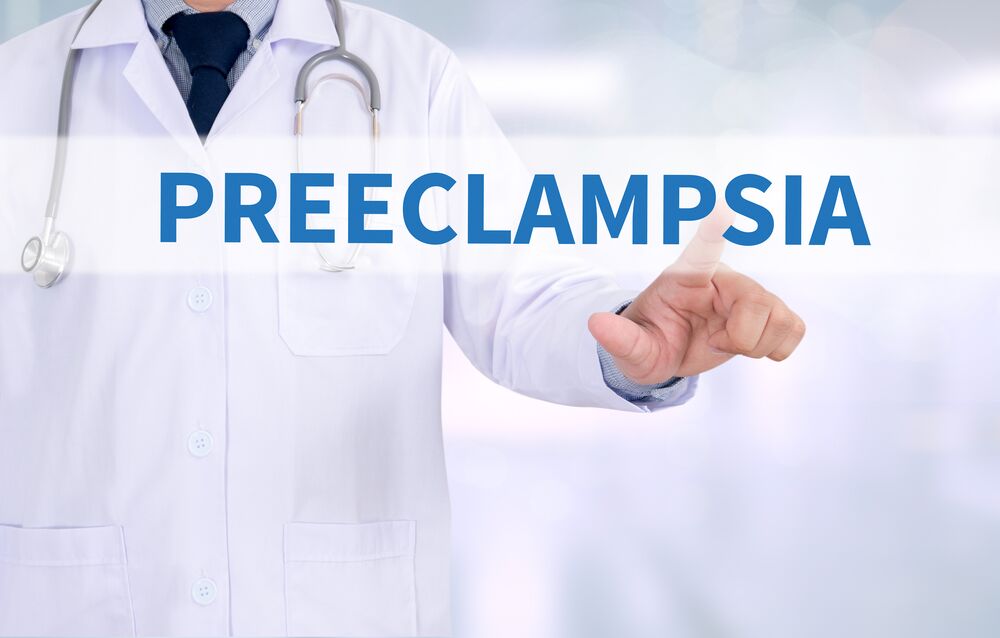 Preeclampsia is a disorder specific to pregnancy, which occurs in 5% of 1st time pregnancies. Preeclampsia originates in the placenta and manifests as new-onset hypertension and proteinuria after 20 weeks’ gestation1. Preeclampsia remains a leading cause of maternal and perinatal morbidity and mortality: each year 70,000 mothers and 500,000 infants die from the direct consequences of Pre-Eclampsia. Non-fatal maternal complications of Preeclampsia include cerebrovascular accidents, liver rupture, pulmonary oedema or acute renal failure. For the baby, placental insufficiency causes foetal growth restriction, which is associated with increased neonatal morbidity and mortality. To date, the only cure for Preeclampsia is to deliver the placenta and hence the baby. Consequently, Preeclampsia adds to the burden of neonatal morbidity and mortality.
Preeclampsia is a disorder specific to pregnancy, which occurs in 5% of 1st time pregnancies. Preeclampsia originates in the placenta and manifests as new-onset hypertension and proteinuria after 20 weeks’ gestation1. Preeclampsia remains a leading cause of maternal and perinatal morbidity and mortality: each year 70,000 mothers and 500,000 infants die from the direct consequences of Pre-Eclampsia. Non-fatal maternal complications of Preeclampsia include cerebrovascular accidents, liver rupture, pulmonary oedema or acute renal failure. For the baby, placental insufficiency causes foetal growth restriction, which is associated with increased neonatal morbidity and mortality. To date, the only cure for Preeclampsia is to deliver the placenta and hence the baby. Consequently, Preeclampsia adds to the burden of neonatal morbidity and mortality.
The impact of Preeclampsia on the health of patients is not restricted to the perinatal period: affected mothers have a lifelong increased risk of cardiovascular disease, stroke and type 2 diabetes mellitus. Children born prematurely as a result of Preeclampsia may have neurocognitive development issues ranging from mild learning difficulties to severe disabilities and a lifetime increased incidence of diabetes, obesity, hypertension and cardiac disease.
In a recently published ‘Report of Major Impact’ the healthcare cost of PE was quantified for the US: in 2012 the cost of PE amounted to $2.18 billion ($1.03 billion for mothers and $ 1.15 billion for infants) within the first 12 months of delivery.
The challenge is that currently nobody knows who is at heightened risk of getting Preeclampsia so pregnancy care models globally resort to monitoring all pregnancies for signs of this life-threatening condition. As populations grow globally, health care services can no longer sustain health care models where everyone is at equal risk. Being able to identify patients’ individual risk levels will facilitate tailored care and personalised medicine. Personalised medicine tailors the right therapeutic strategy for the right person at the right time Metabolomic Diagnostics product supports the personalized care model delivering timely and targeted prevention of pregnancy complications.
The condition is typically characterized by the development of high blood pressure and protein in the urine (“proteinuria”). Swelling, sudden weight gain, headaches and changes in vision are other important symptoms. However, some women will get preeclampsia without any of these symptoms. The often rapidly progressive escalation of preeclampsia makes it one of the most dangerous pregnancy conditions and the only cure is to deliver the baby. As a result Preeclampsia is a major contributor of Preterm Birth. Worldwide preeclampsia and other hypertensive disorders of pregnancy are still a leading cause of maternal and infant illness and death. An estimated 50,000 maternal and 500,000 infant deaths are attributed to preeclampsia and related conditions each year.
Metabolomic Diagnostics’ vision is to offer pregnant mothers PrePsia™, a risk screening test for pre-eclampsia, providing clinicians knowledge which can support personalized clinical intervention leading to better pregnancy outcomes.








